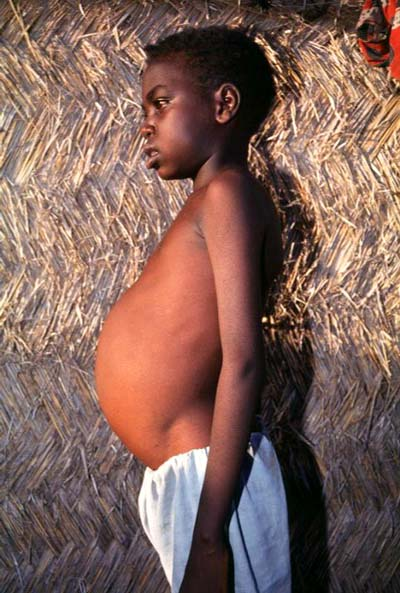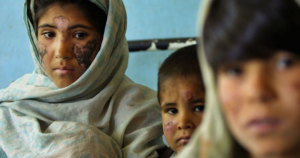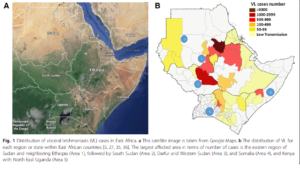
Kala azar – what kind of disease is this?
Yesterday (30th May 2017) – there was a report in the papers about an outbreak of kala azar in Marsabit …..
It caught my attention as it is one of those diseases I learned about at Vet school as it affects both humans and dogs. To be honest, it was all theoretical. I have never come across the disease in dogs or people and don’t know anyone that has suffered the disease.
So what is Kala azar?
Kala azar is the most serious of the conditions causes by a blood parasite known as Leishmania. This parasite is spread by female sandlfies which bite humans for blood, very much like mosquitoes do. Leishmania parasites cause various forms of illness but two are the most common. The less serious cause a skin disease (cutaneous leishmaniasis)…..
Skin lesions can often be painless and take a few years to heal without any treatment being administered. However, they could also be painful and leave terrible scars. Leishmania affecting the skin though is not lethal.
However, leishmania parasites can cause the more serious disease – kala azar. In this case, the parasites when injected by the sandfly into the blood system, spread in the body. The leishmania parasites invade white blood cells and multiply in them, bursting out and infected more white blood cells. They invade the liver and spleen and cause serious swellings of these organs. The parasites also invade the bone marrow and massively reduce the production of red blood cells, white blood cells and cells that help with clotting.
Kala azar presents as fever at the start which is easy to confuse with malaria. Later, there is weight loss, swollen abdomen and anaemia due to the reduction in production of red blood cells.
Again these are all symptoms found in people suffering from malaria. Kala azar needs different treatment to malaria and if not treated, it will almost always lead to the death. Untreated kala azar kills 95% of all infected people within 2 years.
Control for leishmanial is pretty much the same as that for malaria. Sandflies tend to bite from dusk to dawn and so sleeping under a bednet will protect from bites. Sandflies are much smaller than mosquitoes so ensure you have a good bednet, preferably an insecticide treated fine mesh bednet. Use insect repellants and staying covered.
Epidemics in Marsabit are not new – there was another epidemic as recently as 2014……
11 dead of Kala azar in Marsabit, 2014
According to the World Health organization, over 62,000 people died of kala azar in 2013 worldwide. Over 90% of all new cases are found in 6 countries: Brazil, Ethiopia, India, Somalia, South Sudan and Sudan. South Sudan is where two-thirds of the East African disease is found – fact East Africa has 15% of all cases globally.
Conflict in South Sudan has been the main pusher of the disease in the East African region. A paper published in 2016 by Waleed Al-Salem in the journal Parasites and Vectors investigated the impact of the conflict in South Sudan on kala azar in the East African region. The paper can be found on line…
https://www.ncbi.nlm.nih.gov/pubmed/27549162
The paper discusses how conflict in South Sudan has led to some of the biggest outbreaks within the country but also seeded the disease through those migrating to other countries to escape the conflict.
Al Salem’s paper has a map that shows the most recent distribution pattern of kala azar in East Africa…
It is important to remember that Leishmania is not spread through contact. Like malaria parasites that need to go through the mosquito for parts of development to occur, the leishmania parasite also needs to go through a part of it’s life cycle in the sand fly. So, casual contact is not a source of disease.
Kala azar is a disease of conflict and poverty. It can be contained and controlled if resources are poured into affected communities. Early treatment means that less people are infected and sandflies cannot continue to transmit the disease but delayed treatment means there is a lot of opportunity for the disease to spread. However, treatment is not cheap and takes a month. As the people affected often suffer from malnutrition, feeding must be provided for the drugs to work. Kala azar may be a rare condition, but when it is an expensive disease targeting the poorest. Governments must move in and be well resourced to contain it.
Comment
Comments are closed.






Moses Musyoki
Have been asking myself. Do people in those areas sensitized about the condition because most the people confuse with malaria in clinical presentation